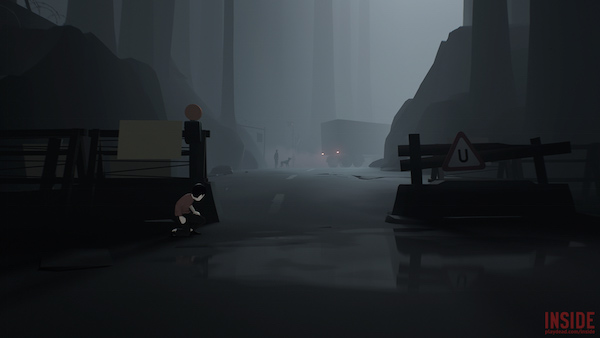Review: Inside – Is it fair to judge the best art in terms of quality per minute?

Definitely unfair: judging images based on beauty per square inch.
Over the weekend, I played through a video game called Inside, which I am comfortable calling a masterpiece. Its moody visuals drew me in. Its haunting environments kept me constantly on edge. Its unsettling themes left a mark I won’t soon forget. Games of this high caliber give me hope for the artistic potential of the medium. It’s that good.
It’s especially easy to recommend because I played through the game in two sittings of a few hours each, making it convenient to absorb in its entirety.
This in contrast to another recent game I also loved, The Witcher 3: The Wild Hunt, a giant role-playing adventure that I spent roughly 80 hours to complete. As I joked on Twitter: “In the time it’s taking me to finish #Witcher3, I could have listened to the entire audiobooks of both Infinite Jest and A Game of Thrones. This is not an exaggeration. I checked.”
Which is not to say that a game becomes immediately less worthy by being longer, deeper, or more epic in scope. Merely that very very long works in any medium, whether a three-and-a-half hour film or a thousand page novel, come with certain baggage. And in the case of Inside, or the original The Office, or the short story collections of George Saunders, there is a sense that every minute, moment, or page were agonized over to distill a work down to their very essence.
The obvious counterargument is that different works have different aims, and a George RR Martin book or Godfather film would not be what they are or achieve what they set out to by slimming down. But if you were to invent a metric that measures Quality Per Minute of artistic works, those shorter works would rate extremely highly, where the longer ones by their very nature would rate lower.
With Inside, that rating would be off the charts. Every minute brings some new surprise, some newly disturbing tableau, some beautiful choice of artistic direction or thought-provoking inversion of expectations. By this measure, this may be one of the best games I’ve ever played.
The question is:
Should quality-per-minute factor in to judging any work of art?
Is that metric an unfair way to consider more ambitious works that aim for a bigger, deeper explorations of ideas?
Or, are those works being unfair to their audiences when a shorter work could achieve a similar resonance without requiring so much time?
**Do not be a coward and dismiss the question. Care enough about the limited time you have on this earth to value every minute and demand more of art.